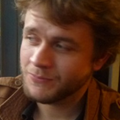
Jérôme Nika is a researcher and a computer music designer / musician specialized in human-machine musical interaction. He graduated from the French Grandes Écoles Télécom ParisTech and ENSTA ParisTech. In addition, he studied acoustics, signal processing and computer science as applied to music and composition. He specialized in the applications of computer science and signal processing to digital creation and music through a PhD (Young Researcher Prize in Science and Music, 2015; Young Researcher Prize awarded by the French Association of Computer Music, 2016), and then as a researcher at Ircam. In 2019-2020, he was in residency at Le Fresnoy – Studio National des Arts Contemporains, and worked as a computer music designer / musician / researcher on 3 projects: Lullaby Experience, an evolutive project by composer Pascal Dusapin, and two improvised music projects: Silver Lake Studies, in duo with Steve Lehman, and C’est pour ça, in duo with Rémi Fox. In 2020, he became permanent researcher in the Music Representations Team at Ircam.
More than 60 artistic performances have brought the tools conceived and developed by Jérôme Nika into play since 2016 (Onassis Center, Athens, Greece; Ars Electronica Festival, Linz, Austria; Frankfurter Positionen festival, Frankfurt; Annenberg Center, Philadelphia, USA; Centre Pompidou, Collège de France, LeCentquatre, Paris, France; Montreux Jazz festival, etc.). Among them, the DYCI2 library of generative musical agents combines machine learning models and generative processes with reactive listening modules. This library offers a collection of “agents/instruments” embedding a continuum of strategies ranging from pure autonomy to meta-composition thanks to an abstract “scenario” structure.
His research focuses on the introduction of authoring, composition, and control in creative interactions with generative agents. This work led to numerous collaborations and musical productions, particularly in improvised music (Steve Lehman, Bernard Lubat, Benoît Delbecq, Rémi Fox), contemporary music (Pascal Dusapin, Marta Gentilucci), and contemporary art (Vir Andres Hera, Le Fresnoy - Studio National des Arts Contemporains).